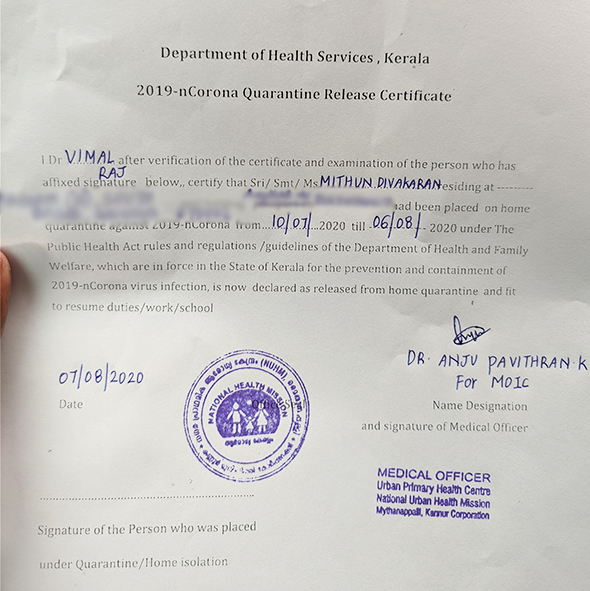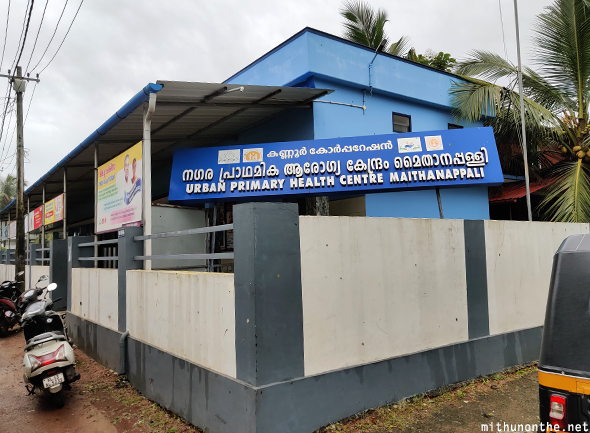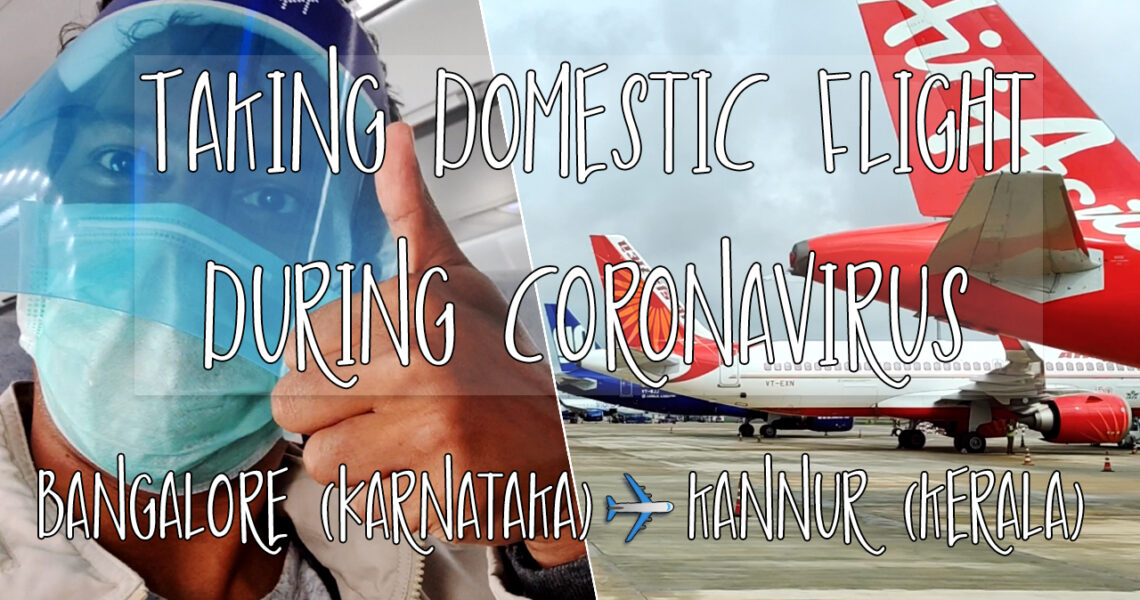Date: July 10, 2020
This is a blog post accompanying a video I edited (linked at the bottom) chronicling my experience travelling during the coronavirus pandemic. I went to Bangalore (local name: Bengaluru) back in late February and initially planned to return to Kannur (my hometown in the state of Kerala). But then India, like much of the world, went into lockdown. April went by, then May and by June, despite rising cases, I figured I had to return to my parents who were by themselves.
The Indian government allowed for domestic flights to resume in June. So in early July, when direct flights resumed to Kannur, I booked my flight on IndiGo (₹2400/$32/€27) departing on July 10.
As the flight date nears, IndiGo will email you a self health declaration form. You must do a web check-in, and you are asked to print that along with the luggage tag.
All those entering Kerala from within India must register on the COVID19 Jagratha portal. That will grant you a pass/registration number to enter Kerala. When leaving Karnataka, travellers do not have to register on Karnataka government’s Seva Sindhu portal. Domestic travellers only need to register on Seva Sindhu upon re-entering/returning to Karnataka.
Finally, all passengers must install the Arogya Setu app on their phones prior to arriving at the airport.
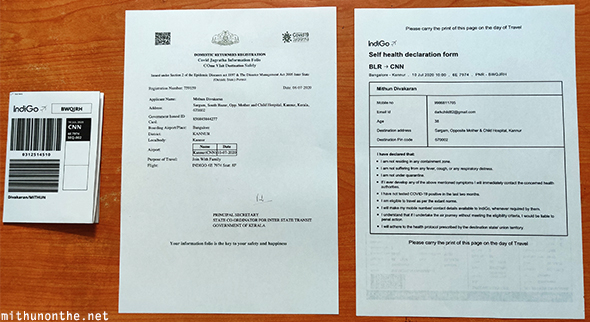
Among all these, the one that ended up being most useless printed document was the luggage tag. Nobody asked for it and you still end up printing out a luggage tag that needs to be stuck to your bags. Even the self health declaration form was checked only by the check-in counter staff and never asked for by anyone else.
On the morning of July 10, I reserved an Uber ride to take me to the airport. All the taxi services have installed plastic sheets dividing the driver and passenger(s) (see the YouTube video below).
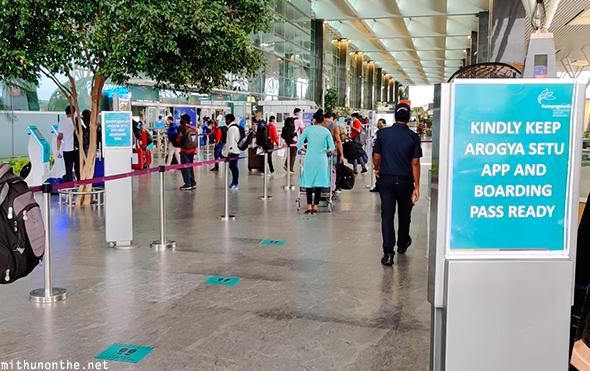
After which you have to stand in front of a thermal scanner which will measure your temperature. Then security personnel will ask you to place the web check-in ticket for scanning (there will be a bar code on it). Security will also ask you to present an identity card (this can be Aadhaar, passport, driver’s license, voter ID or PAN card).
Once inside, you have to then use another kiosk to print the actual boarding pass and luggage tag(s) — see the video at the end of this blog post for all those visuals. Once you stick the luggage tag, you can now walk to the airline counter to drop off your check-in bag(s). If you don’t have any bags to check-in, just take the escalator or elevator upstairs and proceed towards security.

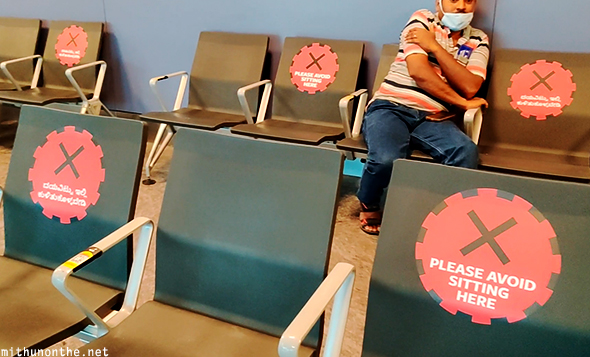

Full body PPE will only be give to passengers sitting in the middle rows or in my flight’s case, the ones in the aisle rows.
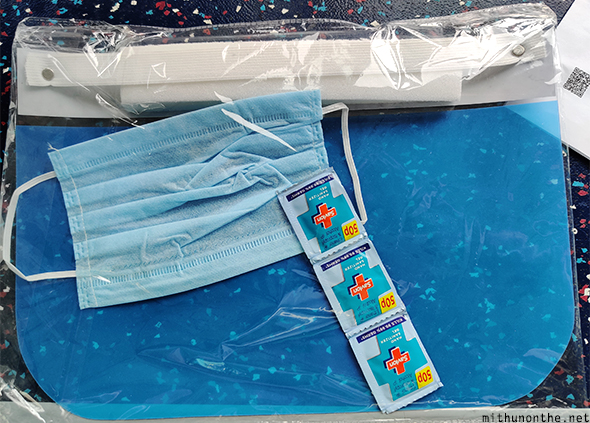
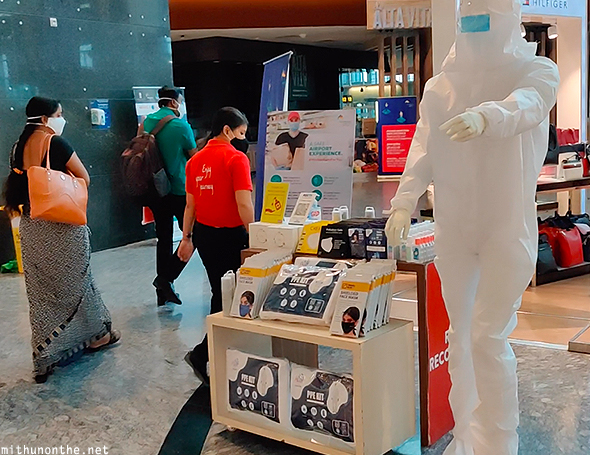
Restaurants, bars and coffee shops are also open but I didn’t see many people inside them. I cannot imagine how these businesses are going to make money at a time when overall passenger traffic is very low and most people are only travelling because they have to and it’s not leisure travel. All airports must offer some waivers on rents because it’s pretty obvious tenants are not making much money.
When it was time for boarding (which began slightly more than an hour before flight time), staff scan your boarding pass and you then proceed on to the IndiGo bus.
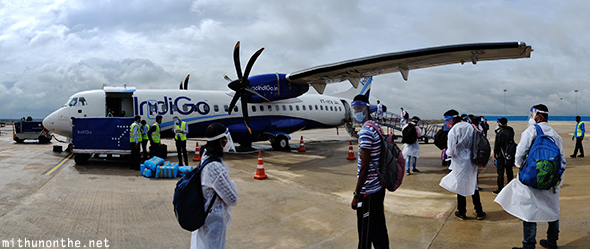
While waiting on the tarmac, I could see cargo planes from DHL and Lufthansa Cargo. Seems like they make up more of the current international jumbo jets flying in and out daily.
By the way, boarding takes a bit longer because staff check each passenger’s temperature before boarding.
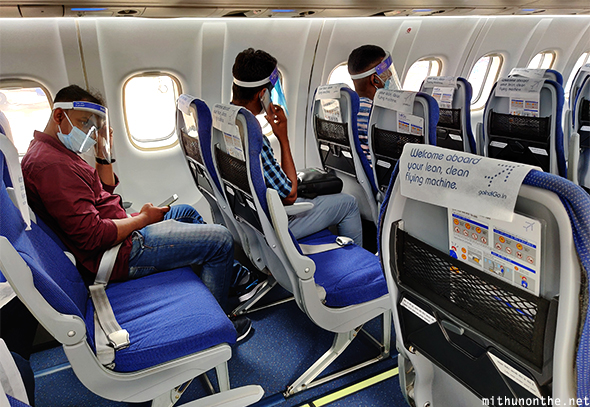

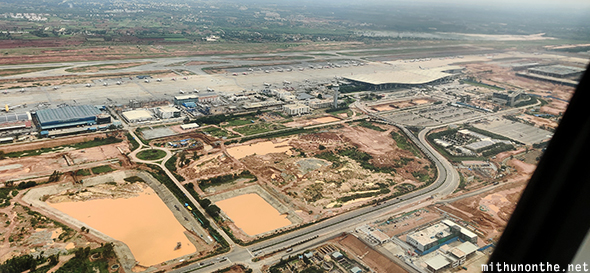
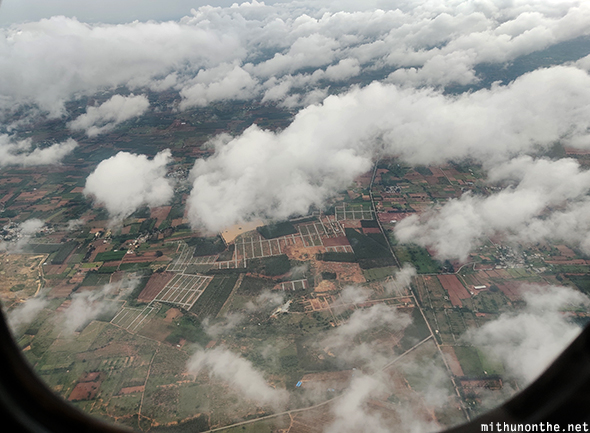

There is more footage from the sky in the video I made but the flight was smooth even though I was in a turbo prop airplane. But it takes slightly longer. One hour flight time versus less than 50 minutes when I first flew to Kannur in a larger Airbus jet.
Upon landing in Kannur, I went straight to the toilet, washed my hands and face with soap and disposed off the face mask and gloves I wore when I left my house in Bangalore.
Here is what follows as you head down to collect your bags.
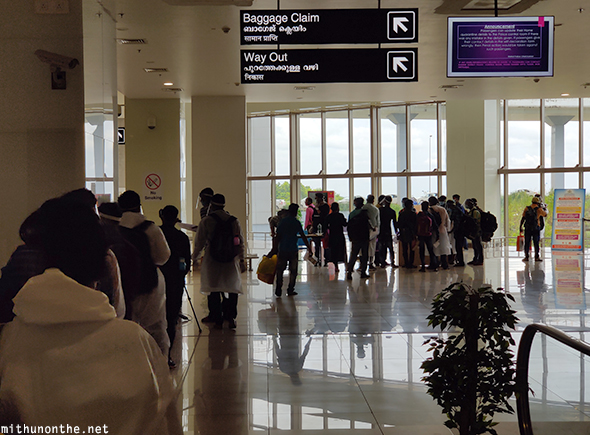
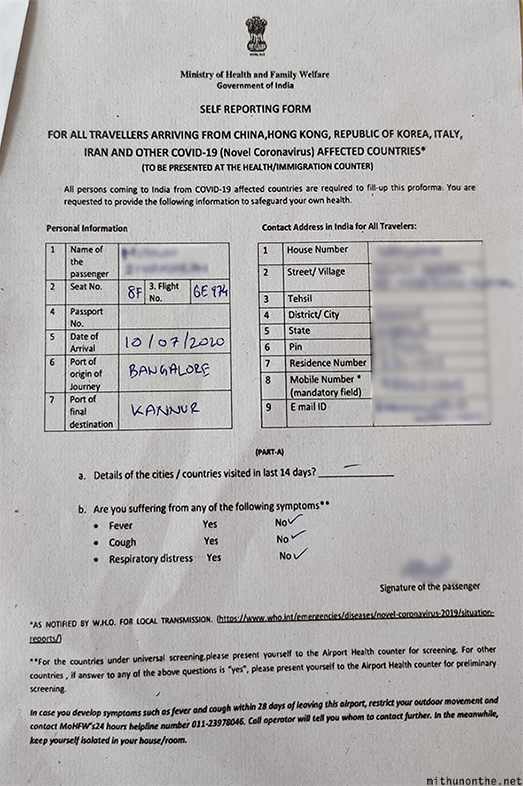
Once you get the self reporting form stamped, you can then proceed to collect your bags. Then head to the pre-paid taxi counter to book your ride. When I arrived, I was told pick-ups by friends and family weren’t being allowed at the moment.

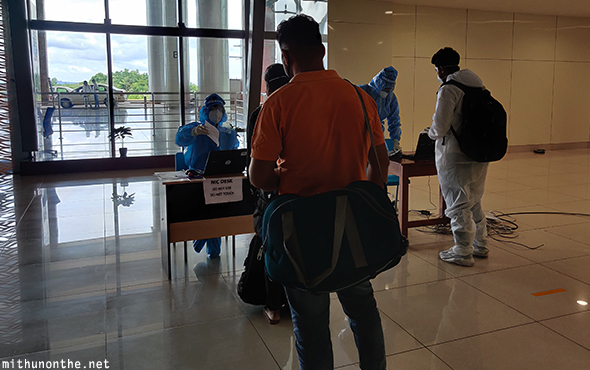
NIC officials told me I would have to observe 14 days home quarantine. International arrivals would have to spend 28 days in home quarantine.
After that, you can go to the doffing room — an area where you can take off and dump the face shields into plastic bags. You must dispose off airline-provided PPE and face shields at the doffing room.
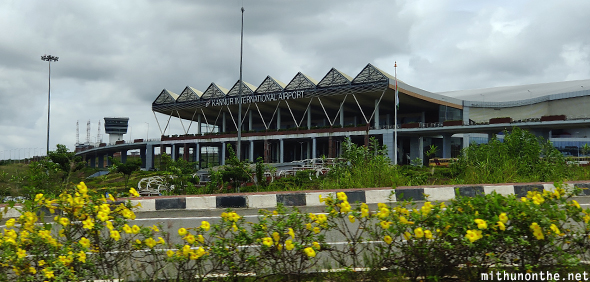
Once out of the terminal, I was again stopped at another desk who asked for my contact details. Probably the biggest inconvenience was trying to understand what various staff at both airports tell you because their voices are muffled behind their masks.
I then boarded my taxi, which too had plastic sheets dividing the passenger and the driver. Due to road traffic being very low, I reached home quickly.
Once I got home, I went straight upstairs after greeting my parents from a safe distance (no touching). I immediately took a bath, sprayed disinfectant all over my bags and clothes. My mother came upstairs with my meals which she placed at a desk near the steps. I would do my dishes and wash my own clothes until my quarantine ended. I had brought a stock of snacks and chocolates to keep me occupied too
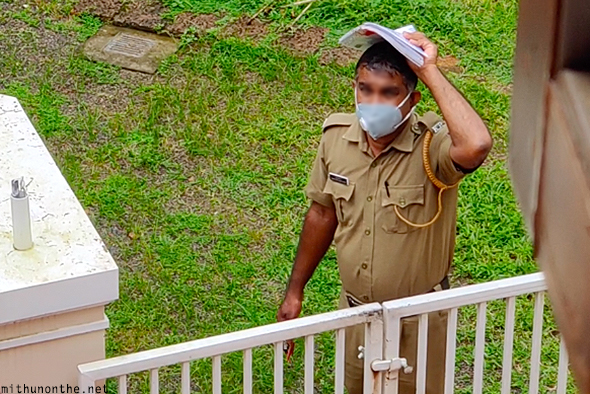

Over the weekend, a policeman would even make a visit wearing plain clothes. None wore full body PPE but all would wear masks. As long as they are safe going from house to house.
In between, I received calls twice from health officials to check if I had any symptoms and how my mental health was during this time. All in all, a good system with only a few hiccups. I was asked by Kerala Police to install an app for monitoring my location but after installing, it never worked properly (registration wouldn’t even work).
On the 14th day of home quarantine, the visiting police officer asked me to call a number of local health official. Upon speaking to the health official, she told me since I had two elderly parents at home, it is better that I stay upstairs for 14 more days and only go downstairs when needed. But I was still not allowed outside my house and was asked to avoid physical contact with anyone for another two weeks. She said there have been cases where international arrivals showed symptoms on the 14th day so it’s better to be safe.
After 28 days, I will be issued a certificate stating I’m in the clear and I can step out again. I will update this blog post with whatever additional information I have as I go through this quarantine experience.
I decided to film and write about all this in case others were nervous or wondering about whether it was safe to be travelling by flight at this time. I hope others find this information useful. If you did, feel free to like and share my blog post or just share the below video I made about my journey:
UPDATE: 7th August 2020
